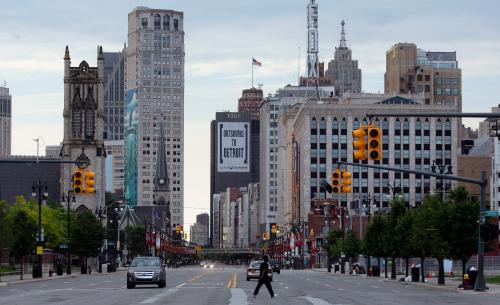What good could there possibly be to say about the nation’s ruinous $1.8 trillion health care bill?
Not much, one would think. And yet, for all the doom and gloom, at least one welcome dimension of the nation’s runaway health spending merits attention: the value of the jobs and economic activity it generates to particular places and local economies.
Health care jobs and spending, as it happens, have been an economic boon to cities and metropolitan areas. Federal health spending—along with its various other debits and benefits—supports millions of jobs, many of them high-paying and many of them located in the nation’s cities and urban regions.
Most recently, a new Brookings Institution study found that the federal government spent more than $20 billion on health care services in a sample of six metropolitan areas, good for a full 4.4 percent of the metropolitan gross product in each area on average.
This spending—while straining the budgets of major federal programs like Medicare, Medicaid, and the states’ health insurance programs for children—is driving vital employment growth in metropolitan areas.
Between 1992 and 2002, the number of health care service jobs grew to account for some 12 million nationally, and between 6.6 percent and 12 percent of all jobs in the six case-study metro areas. Government estimates further suggest that the number of these jobs will grow by another 16 percent in the next decade nationally.
Some of the fastest growth in these varied jobs is expected to occur in the lowest-skill categories, such as personal and home-care aides. That means the “long boom” of the health sector is especially propitious for low-skill workers in urban areas, who are looking for steady paychecks, wage growth and skill enhancement.
Hence the under-acknowledged silver lining: Billions of dollars of federal spending have made urban economies big beneficiaries of an otherwise broken health care system—a system that will likely continue for years to churn out massive revenue flows, quality jobs where they are most needed, and economic stimulus immune to downturns in the business cycle.
Nobody doubts that the nation’s $1.8 trillion bill—about $6,167 per person—places a huge item on local, state, corporate and national cost structures in the global economy. Waste and inefficiency permeate the nation’s flawed system, ranging from a failure to ration high-tech procedures and tests to a failure to employ basic information technology to streamline and rationalize record-keeping and claim-filing.
Still, state and local leaders too rarely recognize the huge benefits that health expenditures, particularly at the federal level, confer on metropolitan economies.
State and city officials, in that sense, need to keep their eyes on the ball. They are right to worry about the nation’s health outlays. But they also need to keep in mind that health spending represents a major portion of their regions’ future economic prospects and will remain so for a long time.
State and regional leaders should work to ensure metropolitan areas maximize their potential gains from continued health-service expansion.
That means, especially, that they should be pooling their efforts to prepare lower-skill metropolitan workers for health careers through training programs of all sorts, whether by recruiting high-school students for hospital work, ushering welfare recipients into health jobs, or developing “career ladders” within the industry.
In sum, city and state leaders have a great opportunity before them to promote regional vitality and opportunities for families by taking advantage of projected job growth in the health care sector. They should learn to leverage the considerable benefits of health spending, even as they work to control it.



Commentary
Op-edGood Side of Health Costs
December 21, 2004